Can the Universe expand faster than the speed of light?

It depends where you look. The answer is relatively awesome!
“If everything seems under control, you’re not going fast enough.”
–Mario Andretti
One of Einstein’s most famous fundamental laws is that nothing in the Universe can travel faster than the speed of light in a vacuum. If you’re a massless particle, you must travel at that speed, and if you have a non-zero mass, it’s impossible for you to attain that speed, no matter how much energy you pump into it. Even more surprising and counterintuitive is this: if a particle moving close to the speed of light fires out another particle moving close to the speed of light, it doesn’t move at almost twice the speed of light. In fact, it still can’t even reach the speed of light itself! But those rules only apply, strictly, to particles at the same location as one another in spacetime. In the expanding Universe — in curved spacetime in general — the rules are very different. Depending on how you view it, the expansion of the Universe itself isn’t bound by the speed of light at all.
How is this possible? Let’s start with the speed of light, and what that means.

No matter where you are or what you are, there’s an absolute limit to how quickly you can move through space. You might think that by expending more and more energy, you can make yourself move faster… and while this is true, it’s only true up to a point. If you’re moving at just a few meters-per-hour, or a few kilometers-per-hour, or even a few kilometers-per-second, like the Earth does orbiting the Sun, you probably won’t even notice the barriers that exist to moving at an infinite speed. But they exist all the same, however subtly. You see, the faster you move — the greater your motion is through space — the slower your motion becomes through time. Imagine that you were completely at rest on the Earth’s surface, and you had a friend that began with you, also at rest, but then took off in a jet to speed around the world. Before you and your friend depart, you both synchronize watches, down to the microsecond.
If you had a timepiece that was sensitive enough, you’d find that — when your friend completed their journey and returned to you — your watches were just slightly out of sync with one another. Your watch would display an ever-so-slightly later time than your friend’s, likely by only tens of microseconds, but different enough that a precise measurement would be able to tell them apart.
And the faster you go, the more pronounced the difference becomes.

Astronauts on the International Space Station, whizzing around the Earth in a mere 90 minutes, see their watches run slower by seconds; upon returning to Earth, the difference in the amount of time that’s passed is noticeable even with conventional timepieces. The strange thing is, it’s not just the clocks that are running differently due to the high speeds we’re dealing with, but time itself that passes at a different rate.
The fact that clocks and watches run slower at high speeds is only an artifact of the broader phenomenon that time and space are connected, and that a faster motion through space means a slower motion through time. The connection between the two — space and time — is given by the speed of light. The closer you move to the speed of light, the more your passage of time asymptotically approaches zero.
This is why a muon, an unstable particle with a mean lifetime of just two microseconds, can get created at the top of the atmosphere at speeds very close to the speed of light, and can reach all the way down to the Earth’s surface. That’s a journey of some 100 km, whereas if it were only moving at 300,000 km/s (the speed of light) for 2.2 microseconds, it would decay after traversing just 0.6% of the necessary distance. The reason a muon can make it to the Earth’s surface — and if you hold out your hand, about one muon passes through it every second — is because of this effect of relativity.
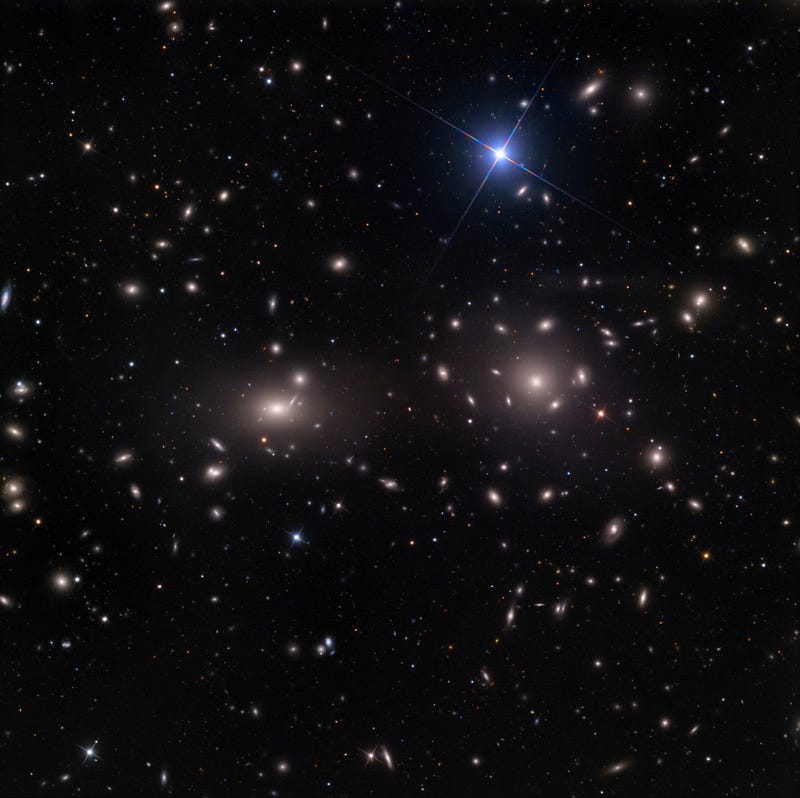
So what, now, of the expanding Universe? You know that if you look out at a galaxy, on average, the farther away that galaxy is situated from us, the faster it appears to be receding from us. Galaxies in the Virgo Cluster, some 50-to-60 million light years distant, move away from us at some 1200 km/s on average; galaxies in the Coma Cluster, some 330 million light years away, appear to recede from us at 7000 km/s.
The farther away we look, the faster these galaxies and clusters appear to recede. Sure, there are small variations of a few hundred or even a thousand km/s due to local motions and the effect of nearby gravitational pulls, but on the largest scales — and at the greatest distances — we can see that the farther away we look, the faster these galaxies are moving away from us. This observation, first made by Edwin Hubble himself in the 1920s, is what gives rise to Hubble’s law, or the law governing the expansion of the Universe. With the best modern observations at our disposal, this law continues out for billions of light years in all directions.
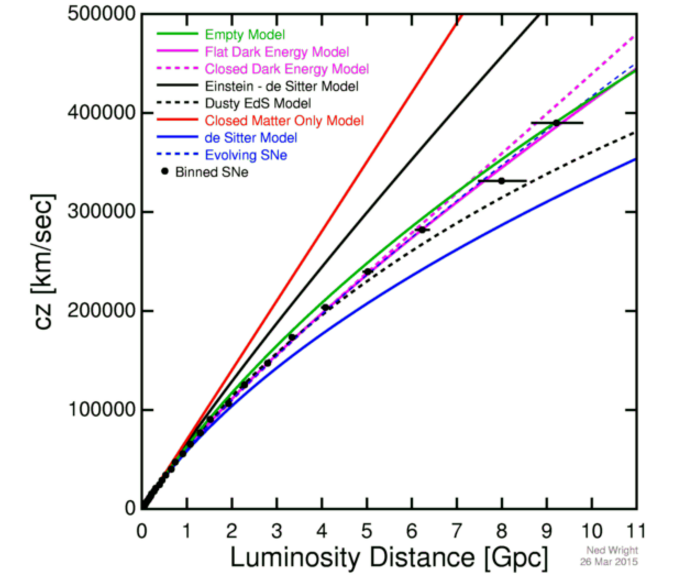
“Hang on,” I can hear you protesting. “What about the speed of light?” Indeed, what about the speed of light? Sure that invisible barrier — the one that keeps all forms of matter from moving beyond a certain speed — would kick in, and prevent the galaxies from receding beyond a certain point, wouldn’t it? Time would asymptote and cease to pass as you approached that speed, and is forever forbidden from passing at a rate less than zero, otherwise these galaxies would be moving back in time, right?
You might think so, but we’ve left out an important piece of the puzzle. The speed of light only applies, as a limit, to objects moving relative to one another at the same location in space.
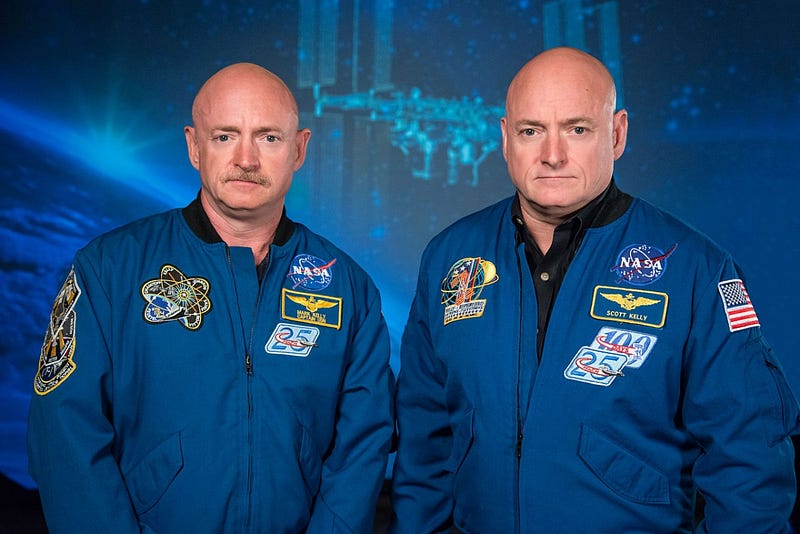
When your friend left in their plane and returned with their watch slightly behind yours, it was because you met up again at the same location. When the astronauts returned to Earth, with their journey having been shorter than yours by several seconds, that was because you wound up at the same location. Even the muon, moving near the speed of light, traveled relative to your frame-of-reference here on Earth, and that’s why its effects were observable.
But out there in the distant Universe, these galaxies aren’t really moving at all. Rather, the space between them is expanding, but the individual galaxies themselves are somewhat stationary with respect to space themselves.
You might be unsure of this as a mere theoretical prediction, but there’s a test you can do: by looking at these distant galaxies and measuring their redshifts and their distances, you can check how they move at tremendous distances against the predictions that relativity makes.
You see, relativity comes in two forms: special relativity, which exists in flat, static space and only the motion of objects through space and time matter, and general relativity, where space itself evolves and/or contracts over time, with matter-and-energy determining the curvature of spacetime, and special relativity existing atop it. Here are how the two predictions differ.
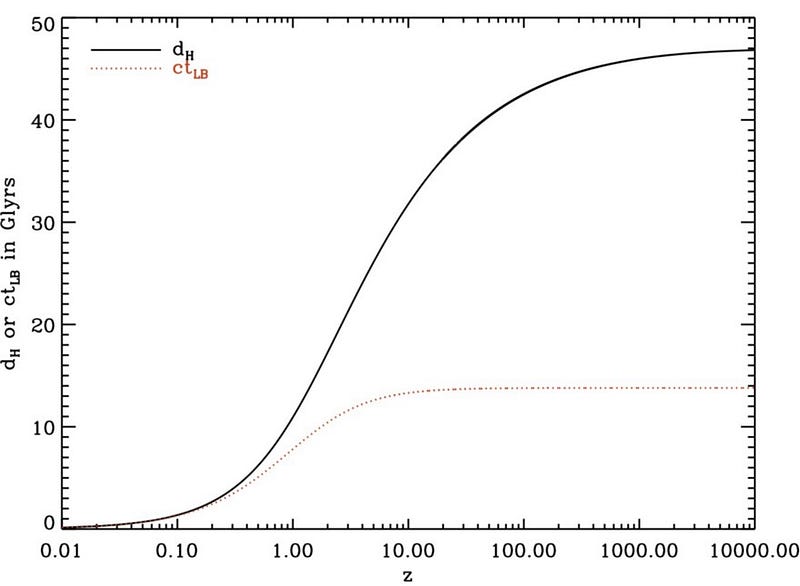
Quite dramatic, isn’t it? As it turns out, our observations definitively favor the general relativistic interpretation, and completely rule out the one where space is static. So what does this mean, when we put everything together? What does it mean for our expanding Universe, even when we add dark energy into the mix?
It means that as time goes on, the light emitted by distant galaxies gets shifted quite heavily towards the red part of the spectrum, resulting in a cosmological redshift. It means that there are some portions of the Universe that are so distant that light emitted from them will never be able to reach us. Currently, that point is anything beyond about 46.1 billion light years from us, given our Universe, to the best we can measure it, that’s been around 13.8 billion years since the Big Bang.
And it means that any object beyond about 4.5 Gigaparsecs (or 14-to-15 billion light years) will never be reachable by us, or anything we do, from this point forward. All of those objects — objects making up 97% of the observable Universe by volume — are all presently beyond our reach. Even a photon, emitted right now, will never arrive at them, if that’s our destination.
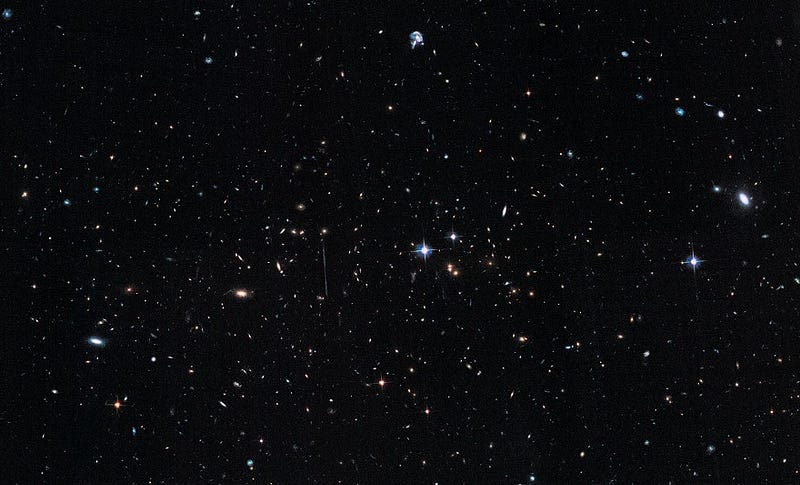
So yes, as time goes on, all the objects that are caught up in the expansion of the Universe will accelerate away from us, faster and faster. Let enough time go by, and all of them will eventually wind up receding faster than the speed of light, unreachable by us in principle, no matter how fast of a rocket we build or how many signals we launch and the speed of light itself. The only thing we can do about it?
Get started on intergalactic travel as soon as we can, before it’s too late. The Universe we have today is disappearing thanks to the accelerated expansion of space. Although no object ever moves through the fabric of space itself faster than the speed of light, there is no speed limit on the expansion of the fabric itself; it simply does as the Universe dictates.
This post first appeared at Forbes, and is brought to you ad-free by our Patreon supporters. Comment on our forum, & buy our first book: Beyond The Galaxy!





